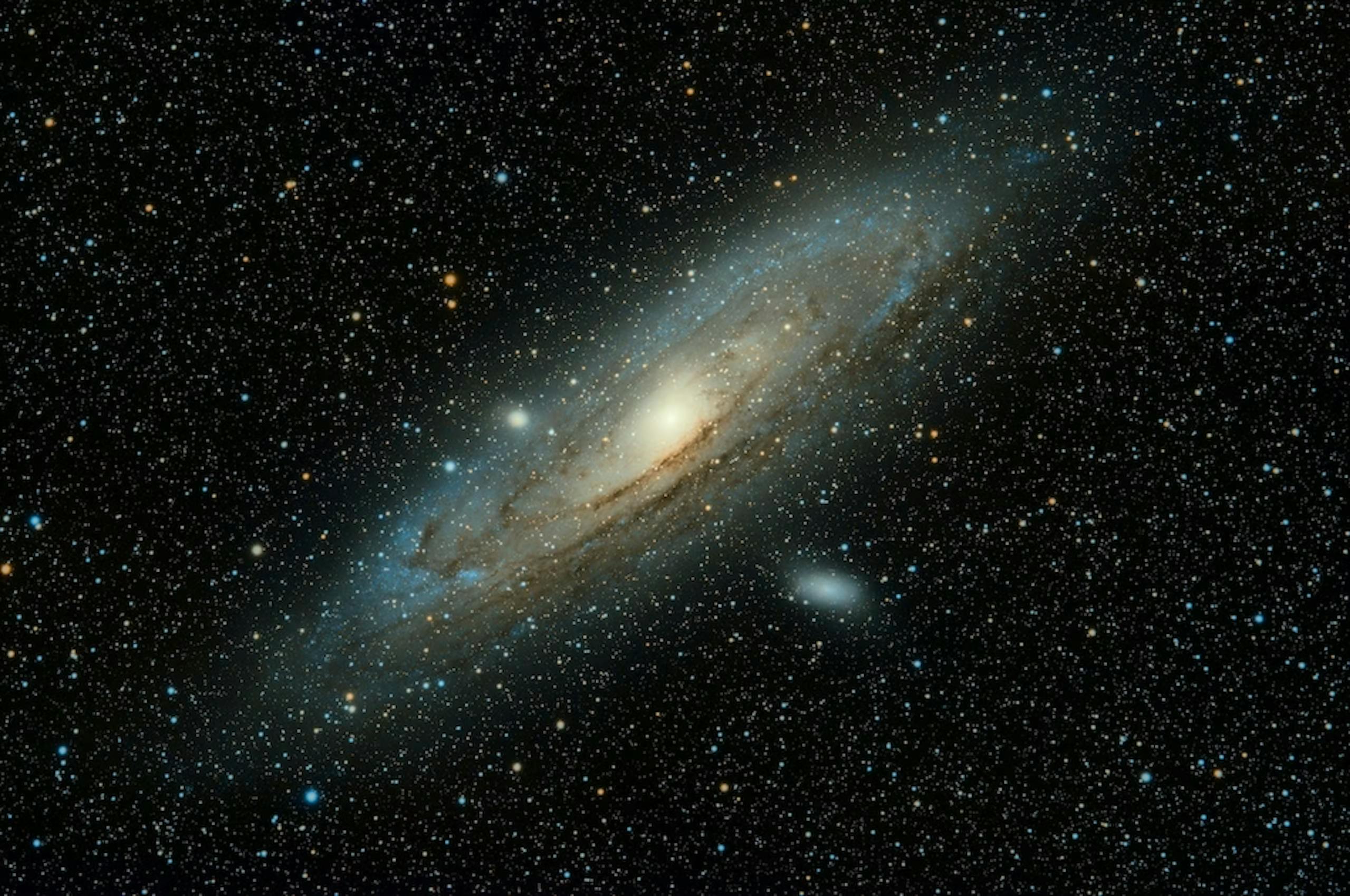
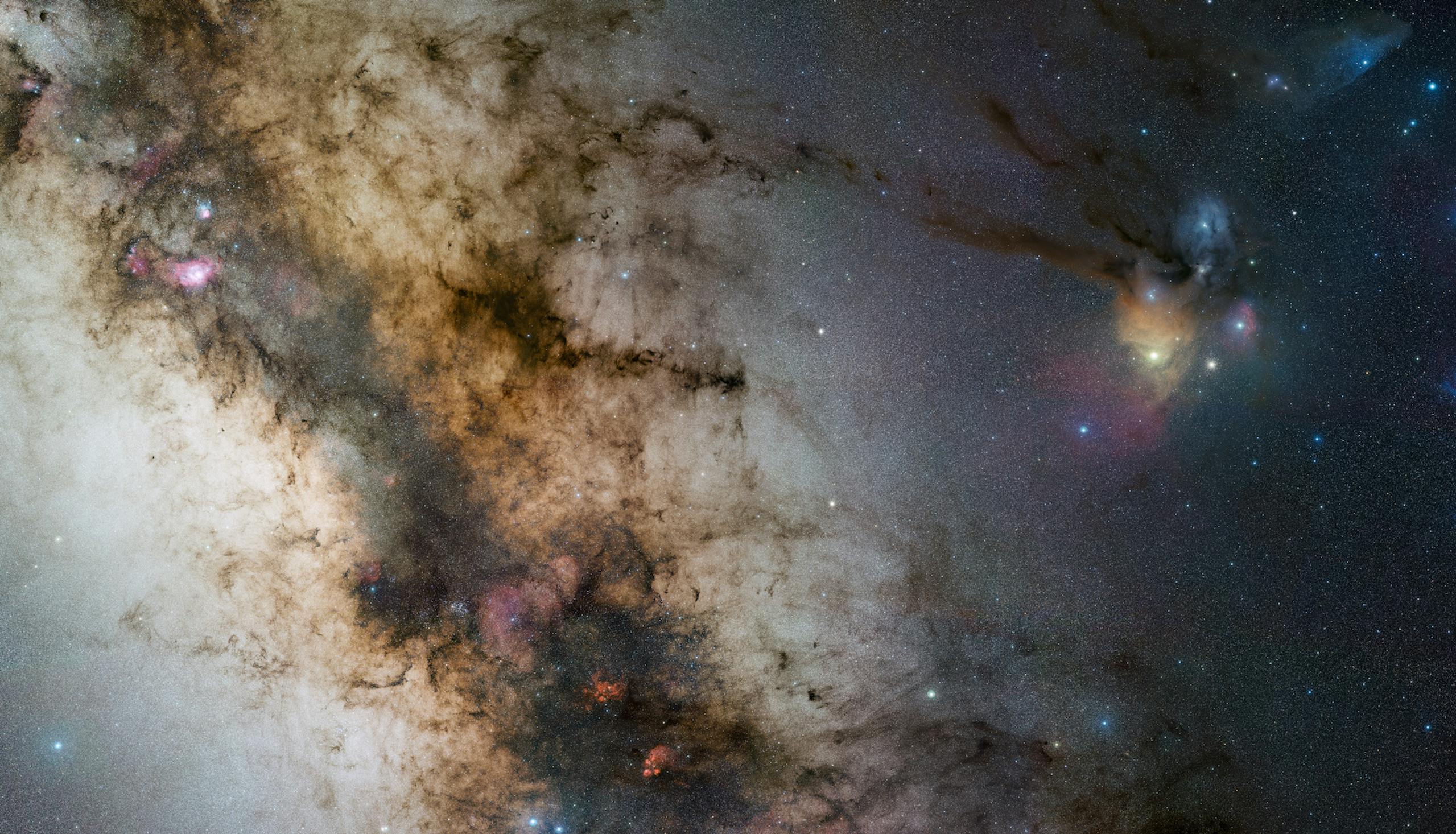
© ESO/S. Guisard
Milanese Universities and Mystery. Unknown Unknowns: Some Mysteries Related to the Origin of the Universe, to Its Evolution, Destiny and Components
As part of the in-depth study of the themes of Unknown Unknowns. An Introduction to Mysteries, 23rd Triennale International Exhibition, since June 2021 we have involved researchers, PhD students and undergraduates from universities in Milan and the network of foreign communities in a series of meetings and seminars organized and coordinated by Pupak Tahereh Bashirrad, architect and PhD.
Article by V. Fanfani, S. Cancelli, A. Colombo, I. Casiraghi, M. Kushoro, C. Salvaggio, L. Varisco, and L. Broggi from the PhD in Physics and Astronomy, University of Milano-Bicocca.
The Big Bang model aims to explain how the Universe originated, evolved and is evolving, and what its fate will be. It theorizes an explosion starting from an initial singularity that created matter in its primordial state and that during the subsequent expansion manages to explain the formation of all the structures we observe today, from large-scale ones, such as the cosmic web, to those on a smaller scale.
This model allows us to describe the physics of the Universe from a few seconds after the Big Bang to today and, despite being the one that more than others has been able to put theory and observations in agreement and widely accepted by the scientific community, there are still many open questions.
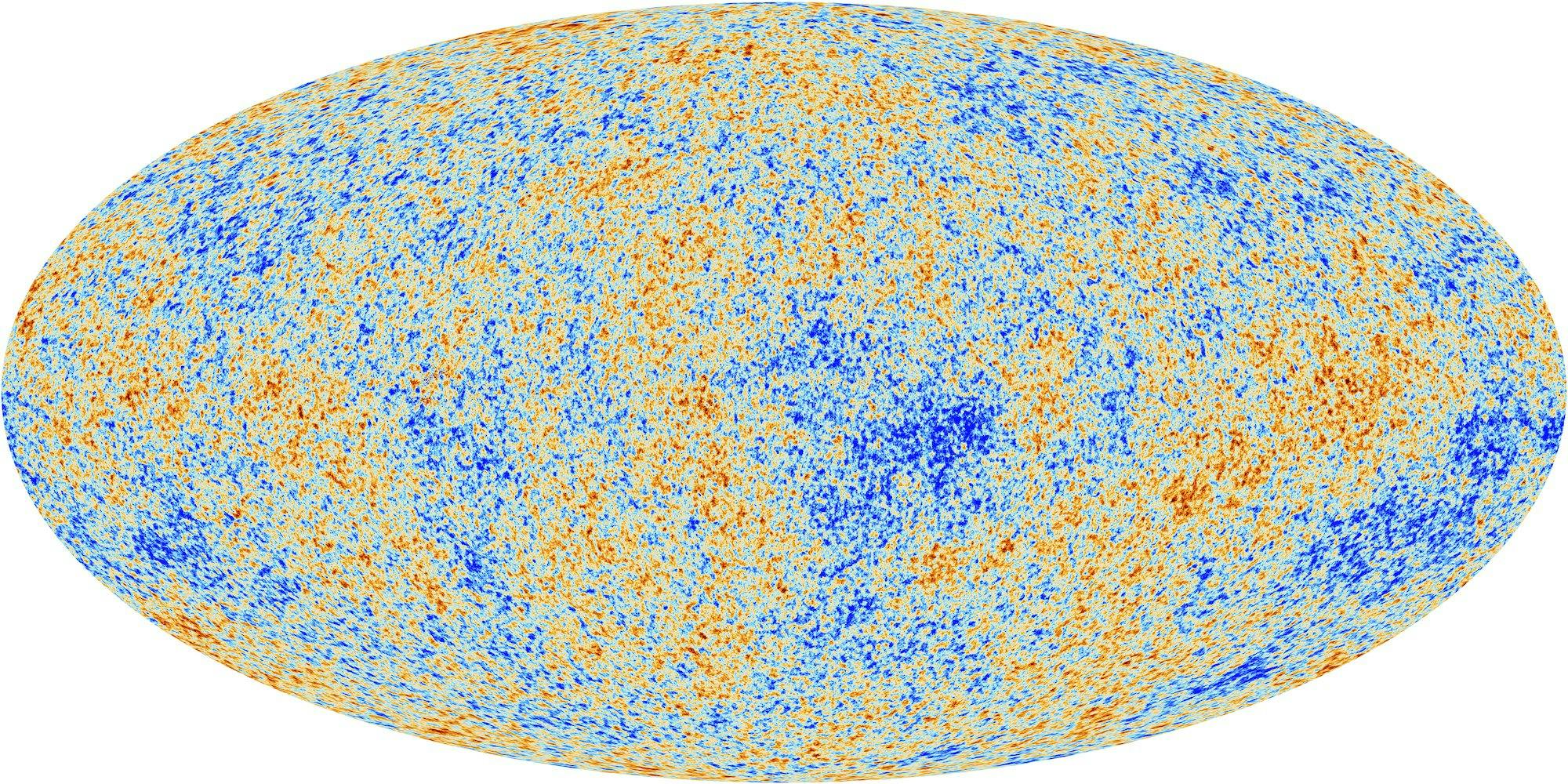
Map of the Cosmic Microwave Background (CMB) anisotropies observed by the Planck satellite. © ESA/Planck Collaboration
The immense difficulty that characterizes them can be understood by reasoning on the fact that the initial explosion and subsequent expansion do not exclude the possibility of a cyclic Universe, pulsating, without beginning and without end as it is destined to recreate itself infinite times, consisting of phases of expansion and contraction, and that therefore the current phase of life of the Universe is only one among the many that have followed and will succeed each other. And if it is easier to think of time as a linear dimension born with the Big Bang, it is more difficult to think of the origin of time in a cyclic Universe. It is therefore rightful to ask whether the assumption that today describes time as born with the Big Bang is legitimate, since for us the concept of time is closely connected with the model itself that describes the Universe.
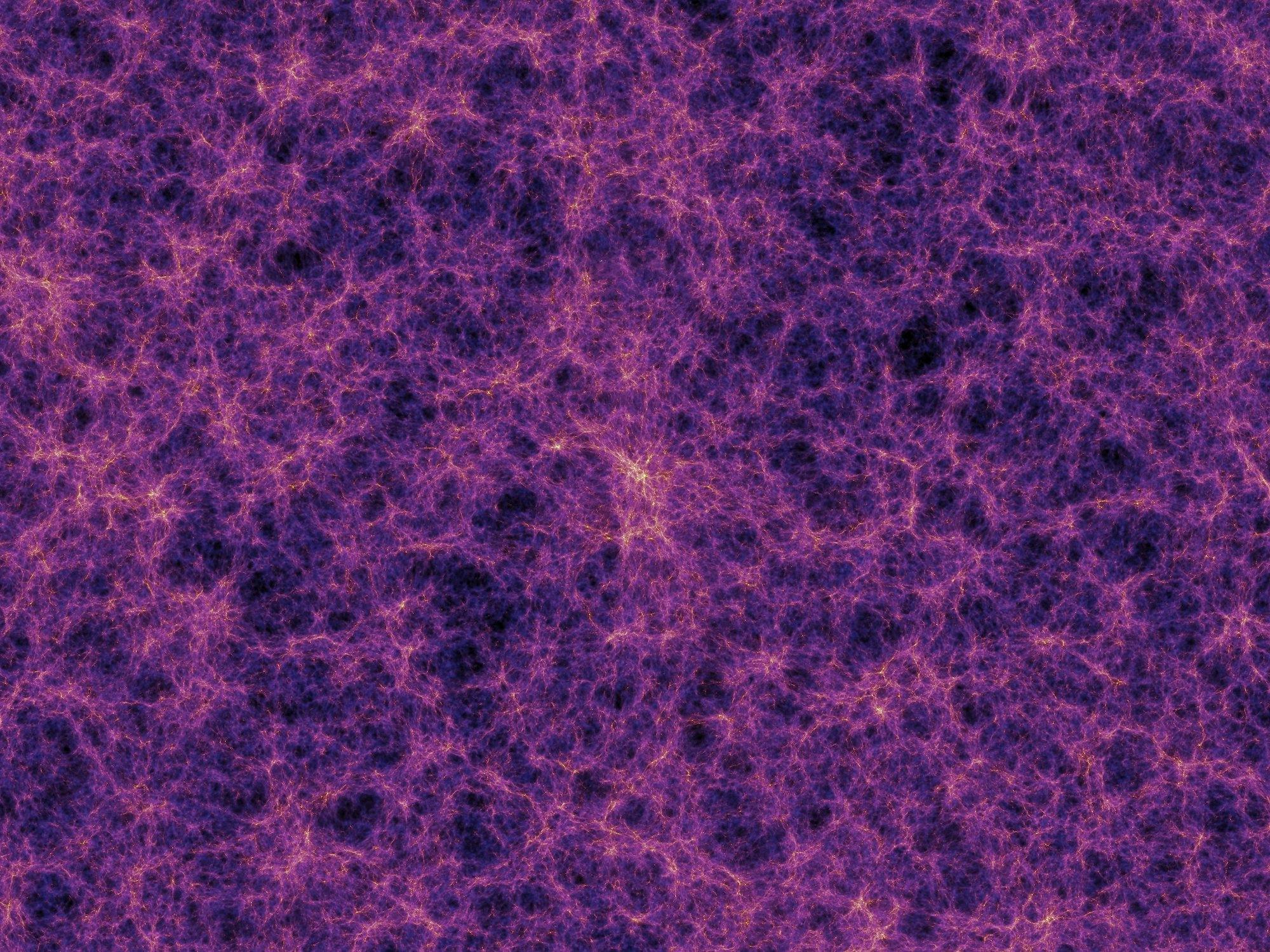
The large-scale structure of the Universe based on the simulation carried out by the Millennium. ©Volker Springel (Max Planck Institute for Astrophysics) et al.
Furthermore, we cannot affirm anything about the fate of the Universe, except outline some purely speculative theory. We are in fact not able to say whether the accelerated expansion we are observing will continue indefinitely, until it leads the Universe to a big rip that will destroy the atomic structures themselves; if this acceleration of the expansion at some point will cease, until to lead the Universe to a heat death by freezing; or if this expansion will cease at a certain moment, to give way to a phase of contraction and thus return to the initial singularity.
Finally, it is necessary to mention one of the theoretical predictions of the Big Bang, formulated at the table to provide an explanation to some observational evidences but of which to date we have no certain proof: the existence of the inflationary period. The latter consists of an accelerated expansion of the Universe which is believed to have occurred due to a negative pressure immediately after the Big Bang and which led it to expand by a huge factor, about one billion billion billion times. It also predicts the formation of primordial gravitational waves, that is to say perturbations of space-time that propagate with an undulatory character, causing a rhythmic contraction and dilation of the distances between the points of space-time, and which represent the only hope of being able to confirm inflation.
The scientific community is spending many resources precisely in the attempt to observe the very weak polarization signals impressed by the primordial gravitational waves in the oldest fossil radiation in the Universe: the CMB (Cosmic Microwave Background radiation). The latter allows us to look back in time to about 380,000 years after the Big Bang, and today represents our observational boundary since no information in the form of electromagnetic radiation arrives from the older regions. However, if we were able to observe the very faint signs of the inflation, we could continue our journey back in time.
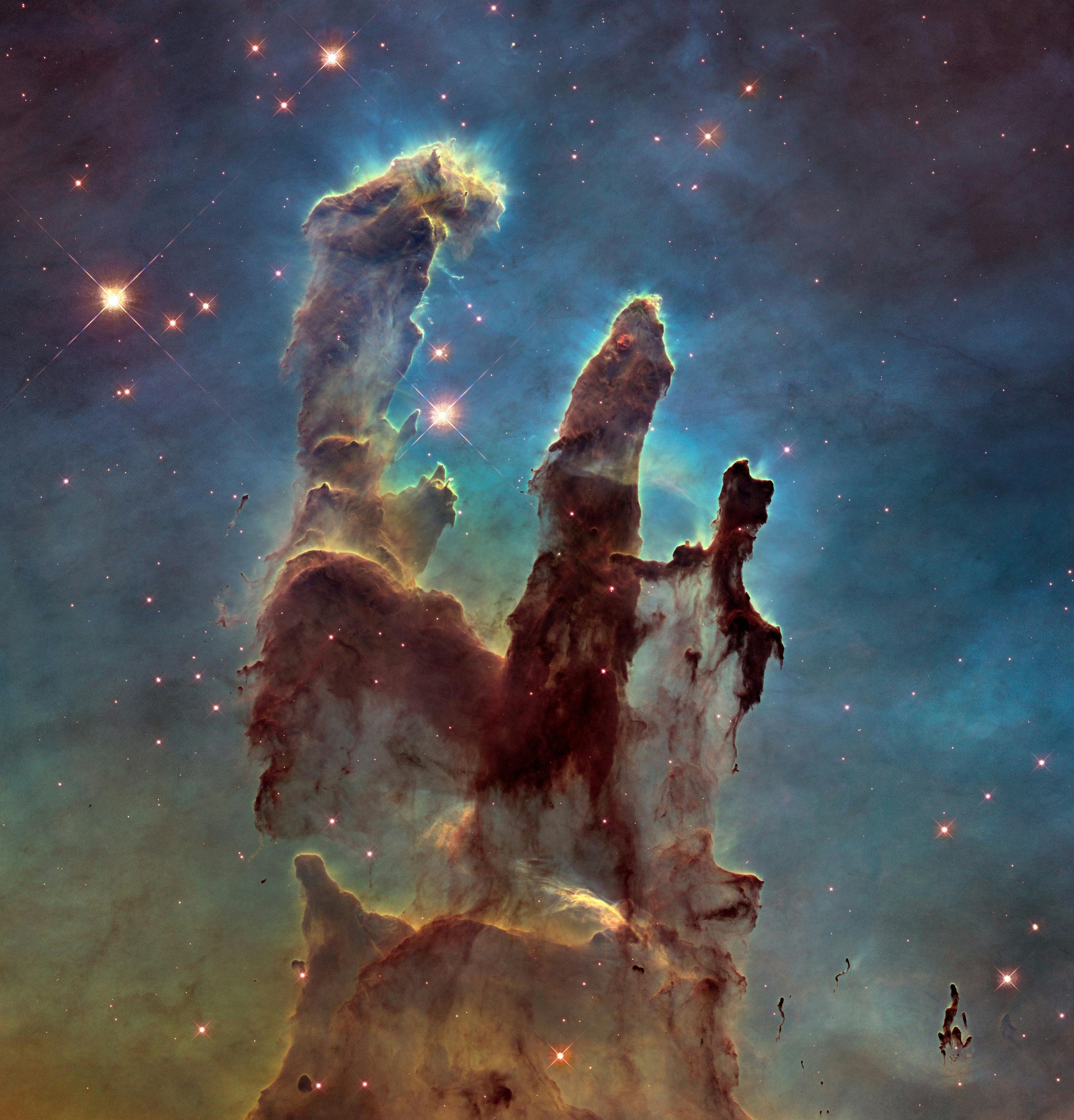
The Pillars of Creation of the Eagle Nebula observed with the Hubble Space Telescope. © NASA, ESA, and the Hubble Heritage Team (STScI/AURA)
This reflection highlights the range of ways in which the Universe can be investigated and, relying on the metaphor of the five human senses, it can be: viewed through the reception of the emitted radiation; touched by receiving particles; tasted and smelled through the study of molecules; finally, heard through the reception of gravitational waves.
A study carried out in the radio astronomy center of the Max Planck Institute identified a complex molecule in a cloud of dust in the center of the Milky Way: ethyl formate. Being one of the fundamental chemical components of both rum and raspberry, it was therefore declared that, if only we could touch a little of the dust of our Galaxy and taste it, it would recall the taste of raspberry and the scent of rum.
Furthermore, gravitational waves have been one of the most important experimental confirmations in recent years, and have allowed us to hear the deformations of space-time generated by cosmic phenomena in which enormous masses are involved that vary their distribution in a sudden way, such as in the collision of black holes. By black hole we mean a celestial body with a gravitational field so intense that it does not let matter or electromagnetic radiation escape and, from a relativistic point of view, it is a region of space-time with such a great curvature that nothing from inside can escape, not even the light.
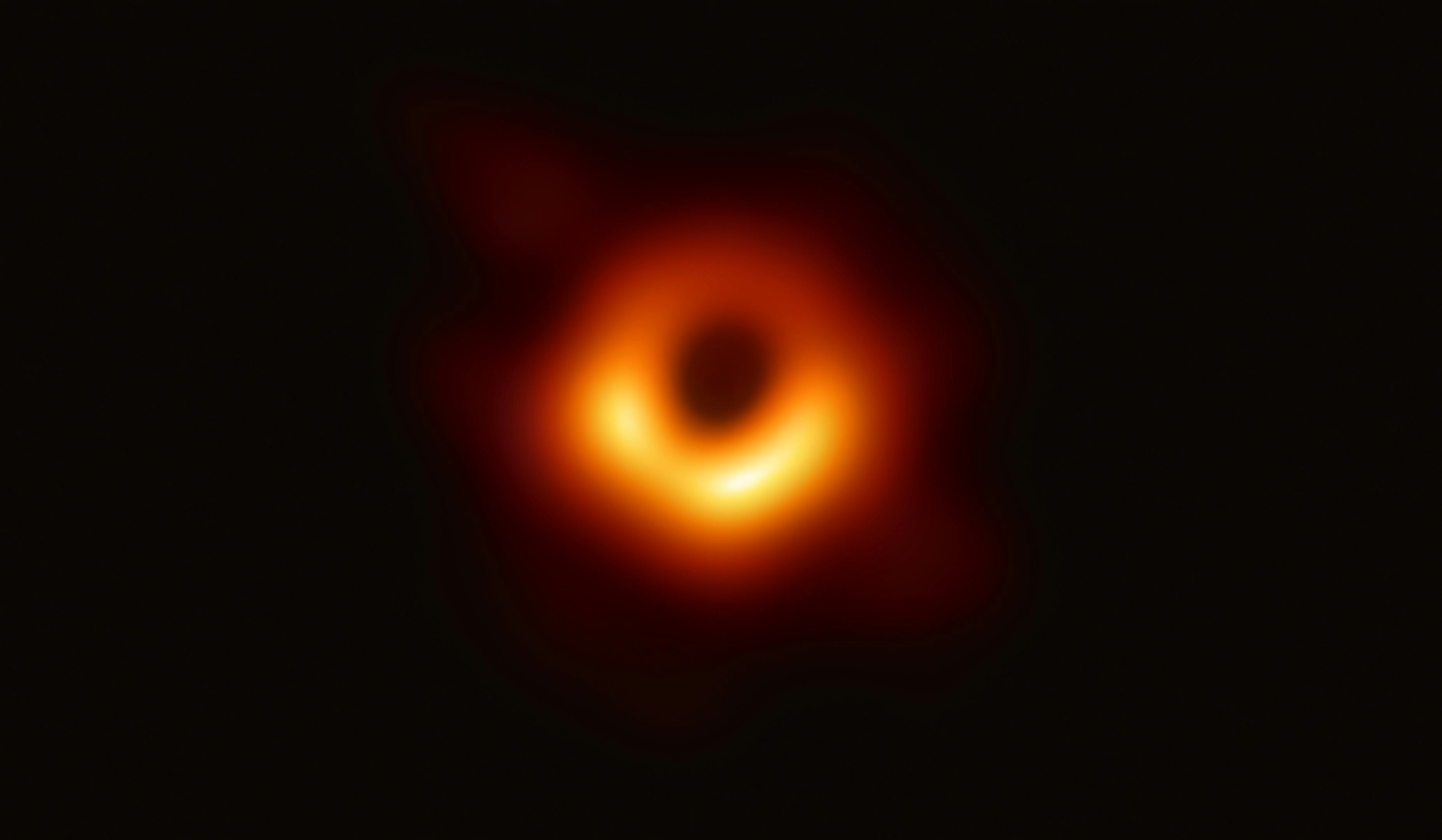
The first photograph of a black hole. © EHT Collaboration
The emblem of the limits of our knowledge about the Universe is finally its composition: we know less than 5% of the Universe. The remaining 95% is divided into approximately 70% dark energy and 25% dark matter. Dark matter, theorized starting from indirect observational tests, interacts only gravitationally and does not emit electromagnetic radiation, unlike known matter. Dark energy is a theorized but not directly detectable form of energy, homogeneously diffused in space, and would seem to justify the accelerated expansion of the Universe that has now been occurring for about five billion years.
The small known fraction of the Universe is made up of free hydrogen, helium, stars, neutrinos, and heavy elements. About 99% of this known matter is in the plasma state, which represents the fourth state of matter. The plasma state is reached when a gas at high temperature is heated up so that atoms are ionized enough to show a collective behavior. The stars, for instance, are made entirely of plasma. In the star cores, thanks to the high temperature and density, the nuclear fusion reactions take place: two nuclei (e.g. hydrogen nuclei) merge with the release of a huge quantity of energy. The nuclear fusion of hydrogen is intrinsically safe (it does not include chain reactions) and a clean energy source, does not emit greenhouse gases, does not produce long-life radioactive waste, and does not depend on environmental variations such as the renewable energies. therefore, scientists are very interested to recreate the sun energy on the Earth and to make nuclear fusion the energy source of the future. Nowadays, we are able to produce fusion plasma into laboratories: in dedicate machines, called tokamaks, the hydrogen is heated up to 150 million of Celsius degrees (10 times higher than the center of the Sun) and confined by strong magnetic fields. ITER, the biggest tokamak ever built, is under construction. In about 2 meters it will present the hottest point and one of the coldest points of the whole Solar System (its superconductive coils which produce the strong magnetic fields have to be at few degrees over the absolute zero). Thermonuclear fusion as energy source of the future represent a scientific and technological challenge. Scientists from different countries are collaborating in order to give an answer to the question: Are we able to reproduce a "small artificial Sun" on Earth?

Image of the Sun produced by data from the Solar Orbiter probe. At the top right is the Earth. © ESA & NASA/Solar Orbiter/EUI team; Data processing: E. Kraaikamp (ROB)
References
1. Barbara Ryden, Introduction to Cosmology. Pearson, 2014.
2. Dorothea Samtleben et al., The Cosmic Microwave Background for Pedestrians: A Review for
Particle and Nuclear Physicists in Annual Review of Nuclear and Particle Science, 2007.
3. Marc Kamionkowski et al., The Quest for B Modes from Inflationary Gravitational Waves, in Annual
Review of Astronomy and Astrophysics, 2016.
4. Karsten Danzmann, Gravitational waves: the sound of the Dark Universe. Spatium, 2017.
5. B. P. Abbott et al., Observation of Gravitational Waves from a Binary Black Hole Merger. Phys.
Rev. Lett., 2016.
6. Michel Claessens, ITER, the giant fusion reactor: bringing a sun to Earth. Springer, 2020.
Related articles
